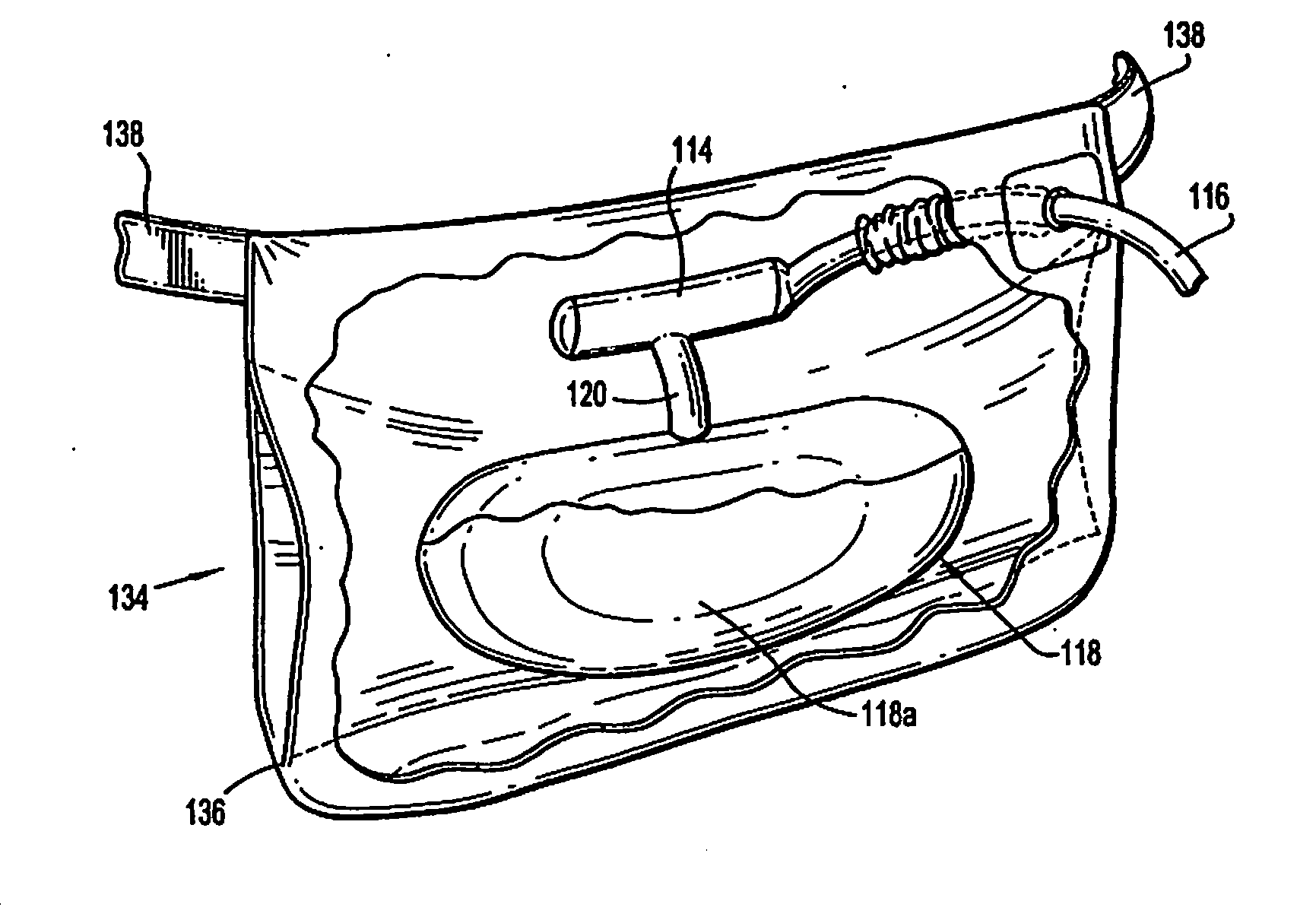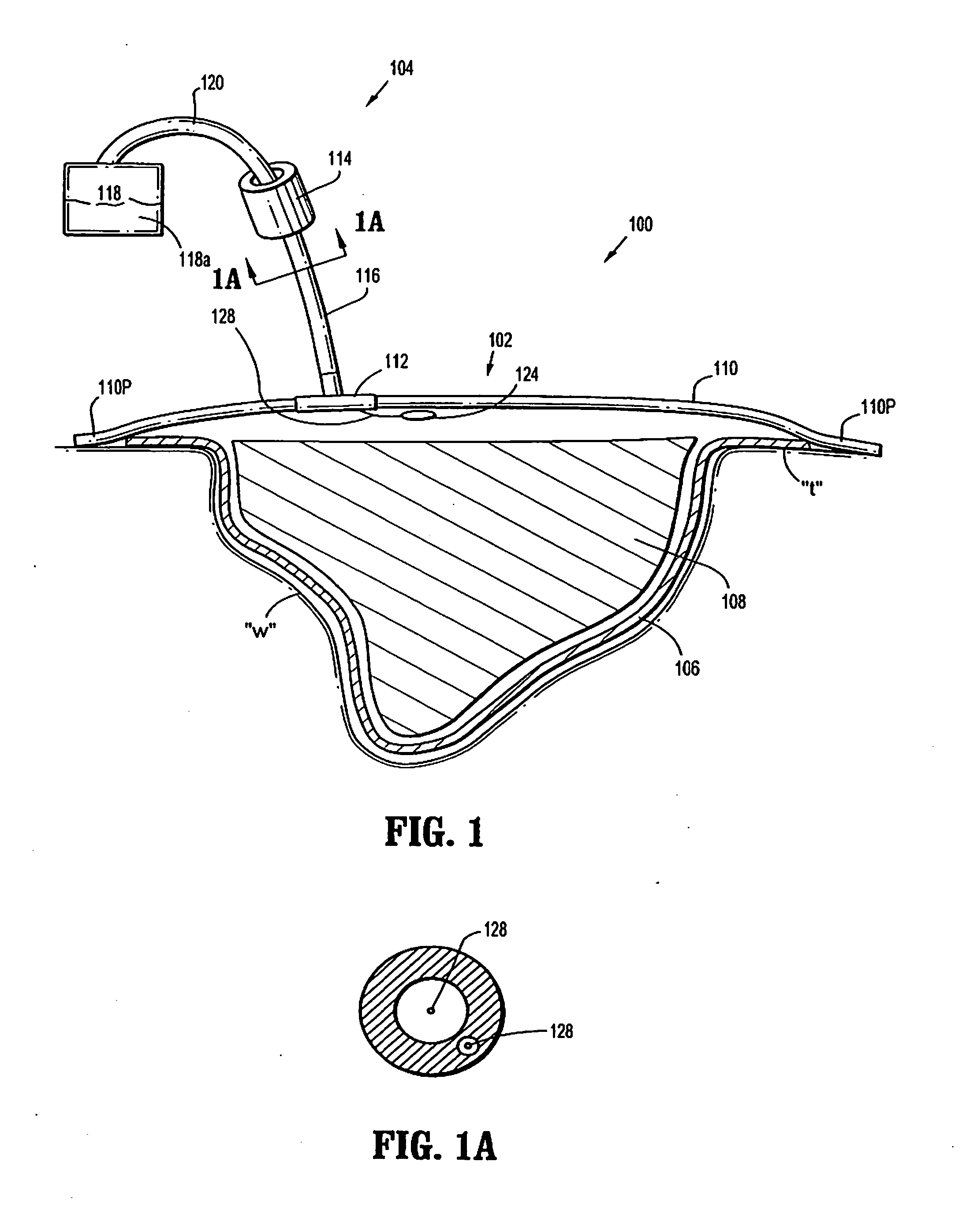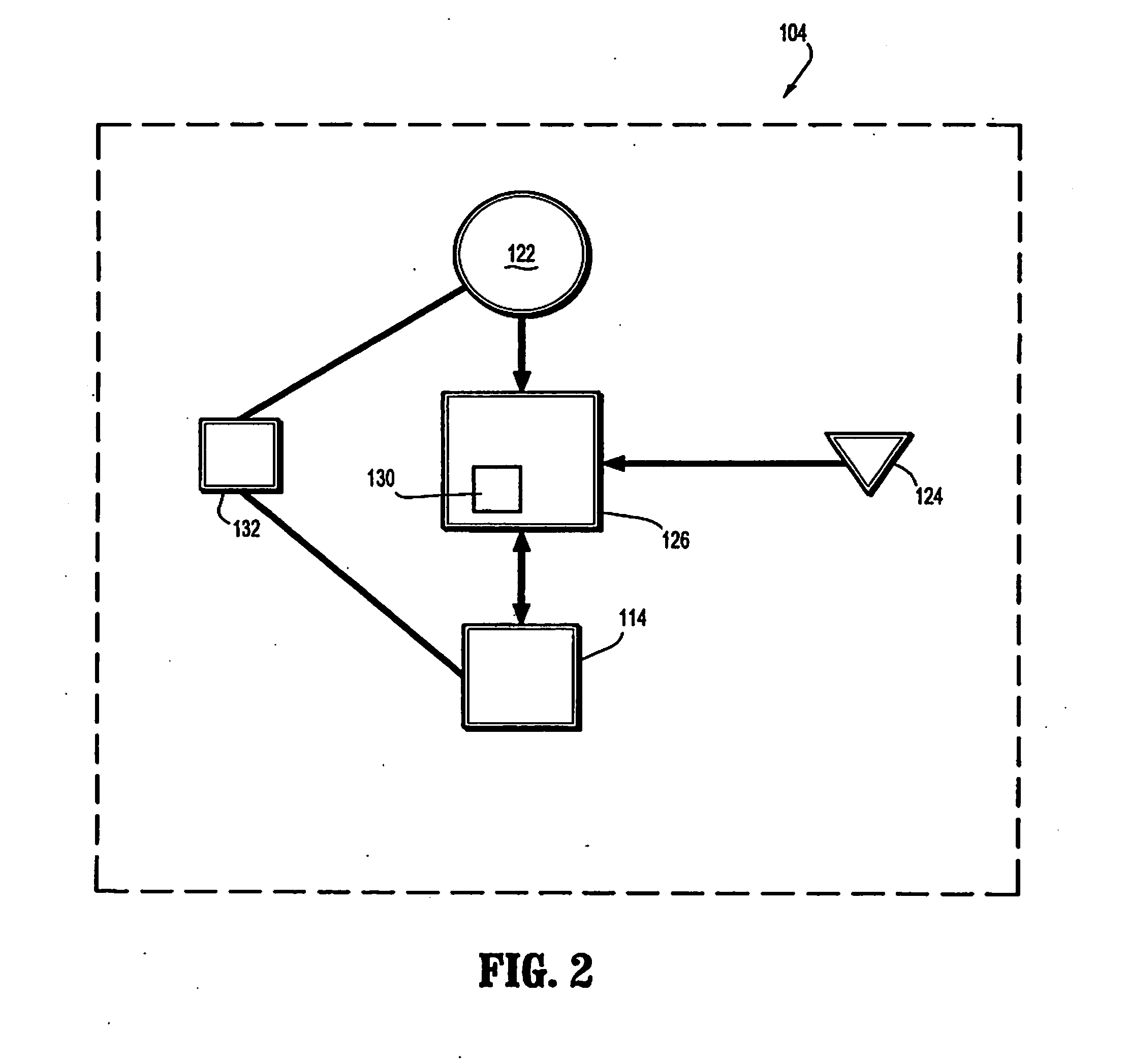Self contained wound dressing apparatus
a self-contained, wound dressing technology, applied in the direction of wound drains, antibacterial agents, catheters, etc., can solve the problems of difficult wound closure, less able to close the wound naturally, and less able to successfully close the wound
- Summary
- Abstract
- Description
- Claims
- Application Information
AI Technical Summary
Benefits of technology
Problems solved by technology
Method used
Image
Examples
Embodiment Construction
[0020]The composite wound dressing apparatus of the present disclosure promotes healing of a wound via the use of an external peristaltic vacuum pump. The external peristaltic pump applies a vacuum pressure to the wound to effectively draw wound fluid or exudate away from the wound bed. The external peristaltic pump is tethered to the wound dressing and is portable, preferably, carried by the patient, which permits patient mobility. Moreover, the patient does not need to be constrained for any period of time during therapy and while exudates is being removed from the wound.
[0021]Referring now to FIG. 1, the wound dressing apparatus 100 in accordance with a preferred embodiment of the present disclosure is illustrated. Wound dressing apparatus 100 includes composite wound dressing 102 and pump system 104 tethered to the wound dressing 102. Wound dressing 102 is in the form of an article with multiple layers arranged in juxtaposed or superposed relation. The multiple layers include, b...
PUM
| Property | Measurement | Unit |
|---|---|---|
| pressure | aaaaa | aaaaa |
| diameter | aaaaa | aaaaa |
| length | aaaaa | aaaaa |
Abstract
Description
Claims
Application Information
 Login to View More
Login to View More - R&D
- Intellectual Property
- Life Sciences
- Materials
- Tech Scout
- Unparalleled Data Quality
- Higher Quality Content
- 60% Fewer Hallucinations
Browse by: Latest US Patents, China's latest patents, Technical Efficacy Thesaurus, Application Domain, Technology Topic, Popular Technical Reports.
© 2025 PatSnap. All rights reserved.Legal|Privacy policy|Modern Slavery Act Transparency Statement|Sitemap|About US| Contact US: help@patsnap.com



